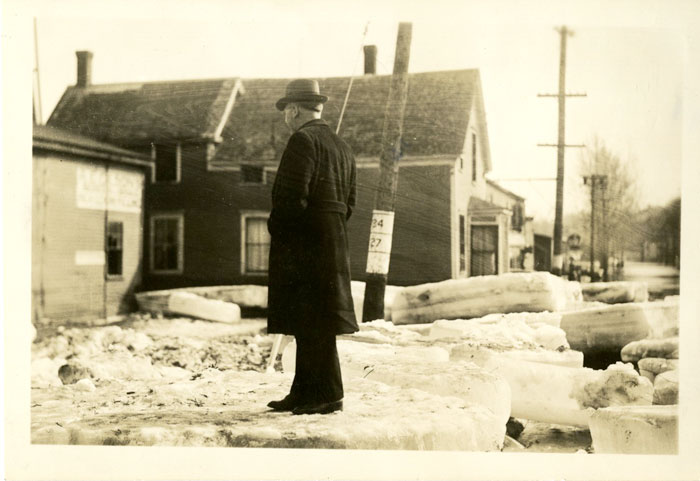Last winter in Maine was relatively mild in terms of snowfall and low temperatures. However, the season was marked by extreme weather patterns, including high winds, heavy rainfall, and flooding that affected both coastlines and inland waterways. When winter brings a combination of deep freezes followed by sudden warming, the hazards can become even more disastrous.
Ice has long posed significant day-to-day challenges in harbors and major waterways like the Kennebec and Penobscot rivers.

Into the 20th century, the transport of goods and people heavily relied on navigable waterways. The launching of vessels, as well as ferry and passenger steamer services, depended on favorable ice conditions, while wooden-hulled merchant ships faced the risk of damage in icy waters.
In the right conditions, ice can create serious problems when it melts and breaks up. Ice floes can jam in rivers, acting like dams that lead to upstream flooding. When the ice jams break, they cause secondary flooding by unleashing a sudden surge of water.
During flooding events, ice floes can collide with structures, causing additional damage. This was notably the case during the historic Great Flood of 1936.
The accompanying images depict the aftermath of this devastating flood that struck Maine and the Northeast in March of that year. A combination of ice floes, melting snow, and several days of heavy rain created a catastrophic scenario, resulting in the damage or destruction of 26 bridges across Maine. The images, taken in Gardiner on the Kennebec River, show large chunks of ice on the streets approximately where Hannaford Supermarket currently stands.
A combination of ice floes, melting snow, and several days of heavy rain created a catastrophic scenario…
To mitigate the impact of ice on commerce, transportation, and public safety, icebreaking has been an official duty of the U.S. Coast Guard since 1936, although the practice had been in place for decades prior. Breaking up ice before a spring melt allows for more ice to flow out to sea and reduces jams.
The first purpose-built icebreaker, the Androscoggin, was assigned to Maine waters in 1908 and was operated by the Revenue Cutter Service, one of the predecessor organizations that merged to form the Coast Guard.
Today, icebreaking efforts in Maine are carried out by U.S. Coast Guard vessels homeported throughout the state: Thunder Bay, Shackle, Tackle, and Bridle. Their primary focus is on the Kennebec and Penobscot rivers, working to prevent ice-related flooding and ensure safe navigation.
Kelly Page is curator of collections at Maine Maritime Museum. The museum’s newest exhibit, “Upon That Isle in Maine: The Story and Works of Chris Van Dusen,” opens Feb. 8. Explore resources and plan your visit at www.mainemaritimemuseum.org





